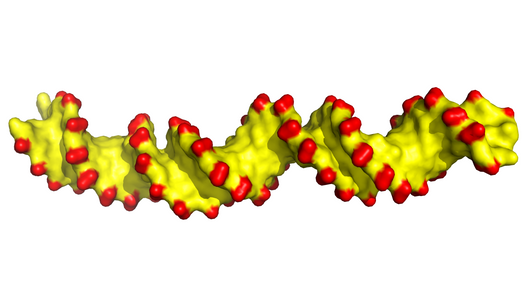Tullius Research Featured in C&E News
The C&E News article, “Putting DNA in a Bind,” gave an overview of a symposium at the Fall ACS Meeting in Boston on how small molecules interact specifically with DNA and regulate gene expression.
Prominently featured was the work of Professor Tom Tullius and his group on their use of hydroxyl radical cleavage, a technique developed in the Tullius lab in which DNA is cleaved to give an indirect image of the shape of the grooves of DNA. The shape information they produce is publicly available in their online database ORChID.
The Tullius group’s ability to produce images of the shape of DNA allows them to map electrostatic potential throughout the genome computationally, without the need for high-resolution X-ray structures. Their plan is to use these maps to locate places in the genome that would be favorable for certain kinds of proteins to bind, making it easier to design small molecules that recognize DNA shape as potential drugs.
